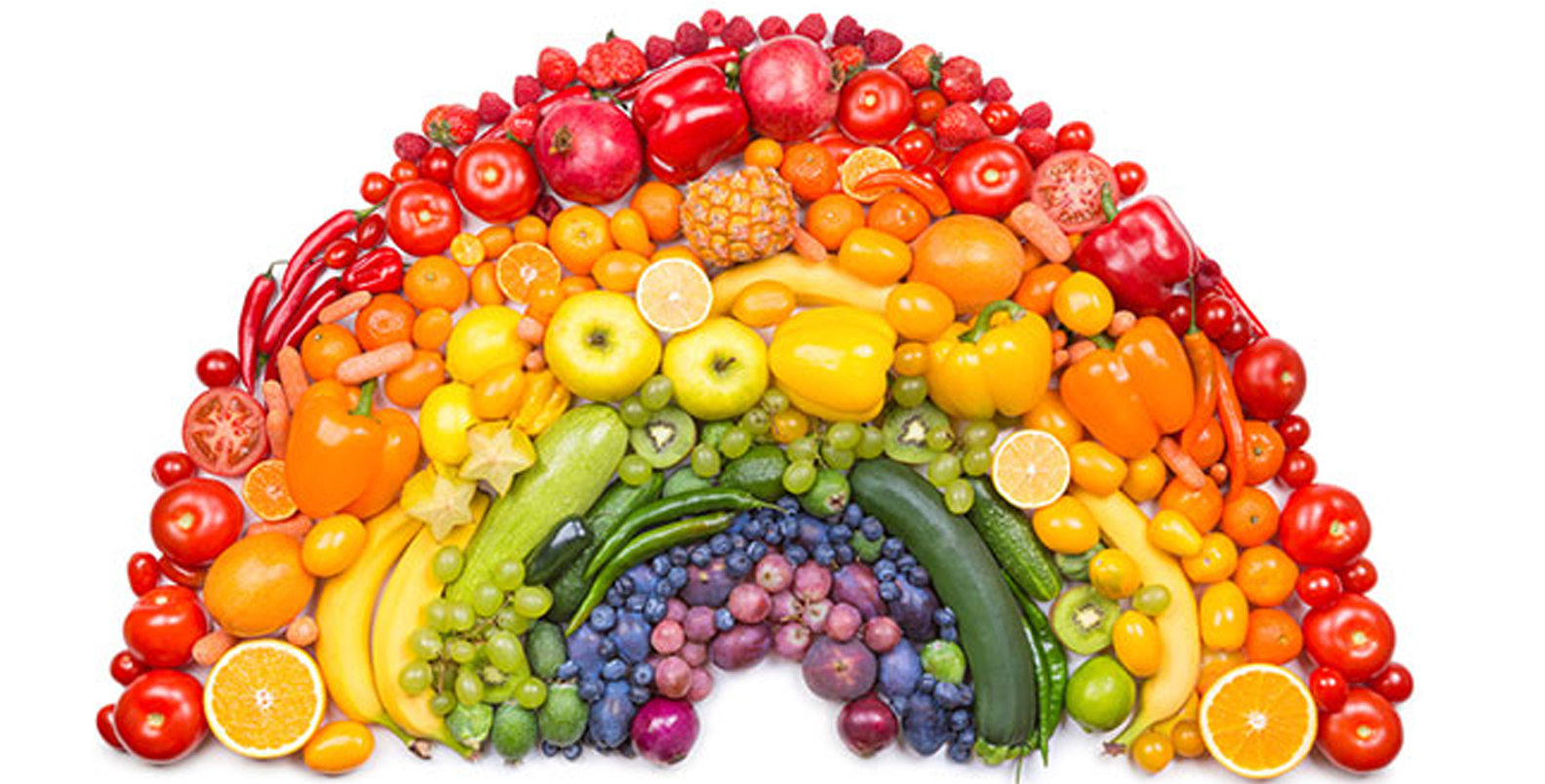Why choose yellow over a green pepper? What is the difference between a white and purple cabbage? What do the colors of the vegetables mean for their nutritional value and also our health? Sumitra Sundaram decodes the color jargon with inputs from Sabita Radhakrishna, food columnist and cookbook author.
Bell Peppers – Red, Yellow and Green
A wonderful combination of tangy taste and crunchy texture, bell peppers are the decorative pieces of the vegetable kingdom. With their beautiful shiny gloss exterior and vivid array of colors, they capture the eyes easily. They are an excellent source of Vitamin C, provide dietary fibre, have low calorific value and rich in oxidants. Green bell peppers are harvested before they are fully ripe. If left to grow, these peppers first turn yellow and then red. They have a slightly bitter flavor but are crunchy and tasty nonetheless. Yellow and red peppers have a sweet, almost fruity taste. Red peppers are richer in nutrients and contain more Vitamin C than its other counterparts.
Best ways to eat:
Cut these peppers into small pieces and toss them up in a salad with salt, pepper, rosemary, oregano, basil and a few drops of lime juice. Keep the freshness intact.
Eggplant – Purple and Green
Eggplant, also known as Brinjal and Aubergine belong to the nightshade family and is technically a fruit that is officially classified as berries and eaten as a vegetable! This is a low calorie vegetable that has a very good nutritional profile. This vegetable is good news for weight watchers because they get cooked in little or negligible amount of oil. The skin of the eggplant contains anti-oxidants that have potential strength against cancer.
White eggplants are smaller and more firmly textured. They are considered to be denser, creamier, milder, less acidic and less bitter. The skin of a white eggplant is tougher than the purple eggplant and thus needs to be peeled off before cooking. However, the same quality also makes it more suitable for baking, steaming or frying as they hold their shape better. But they are available only seasonally and are nowhere close to being as popular as the purple ones.
Purple eggplants, on the other hand, are more popular than white eggplants and are available throughout the year. They have glossy, purple skins and are oval and oblong in shape, and tend to be wider at the end. They have sponge-like texture qualities, which allow it to easily take on flavourings. Purple eggplants tend to have thin, delicate skins, which are easily edible.
Best ways to eat:
- Cut the eggplant in big rounds and keep it on the grill. Season with salt, pepper and spices of your choice.
- Place eggplant on fire and keep turning it so that it does not get charred. Remove the skin and mash it. Fry onions and tomatoes with salt, pepper and spices in a little oil and add the eggplant mash to it and fry for a few moments. This can either be eaten as it is or as an accompaniment to Indian flatbreads.
White and Red Onions
Onions are an indispensable part of every kitchen and almost every cuisine imaginable. While onions bring tears to your eyes and pungency to your breath, they also bring delight to your taste buds. Onions are good for increasing immunity in the system, regulating blood sugar, reduce inflammation and heal infections. Plus, every peel of the onion is rich in anti-oxidants.
Red onions are the all-purpose onions. With their pinkish flesh, their layers are slightly less tender and meaty. Red onions are most often used in salads, salsas, curries and other preparations for their color and relatively mild flavour. The lovely red color becomes washed out during cooking and it turns transparent.
White onions are sweeter and cleaner in flavour, but do not store quite as well as yellow onions do. Milder in flavour, a white onion can be eaten raw too. Because of their crisp texture and mild flavour, white onions are great raw slivered in salads, thinly sliced on sandwiches, or scattered over a pizza. They also tend to be tenderer and have a thinner, more papery skin.
If you thought there are only these types of onions, think again!
Scallions – Bright white at the bottom with hollow, dark green tops, they are long, thin and mildly sweet. Best when used along with ginger and garlic in stir fries.
Spring Onions – They look like scallions, except with a bulb at the bottom instead of being flat. Mild in flavour, they have a touch more spiciness when eaten raw. When cooked, they are tender and sweet. Best when used as a garnish.
Shallots – Otherwise known as baby onions, they are small, slender and lighter in color than red onions, with pinkish-orangey papery skin and light purple flesh. They are milder in flavour than red onions, but more assertive than yellow, with a hint of garlic flavour. Best when used as thinly sliced or fried for topping noodles.
Pearl Onions – Tiny and sweet, pearl onions come in yellow, red, and white varieties. They are milder and sweeter than large bulb onions. Best when used as a creamy glaze sauce or pickle them with vinaigrette.
Cabbages – Purple (Red) and Green
Cabbages are round in shape and composed of superimposed leaf layers. It is a member of the food family traditionally known as cruciferous vegetables and is related to kale, broccoli, collards and Brussels sprouts. No matter what color cabbage you choose, you cannot go wrong with this vegetable. They are both very low in calories and high in fiber and nutrients.
Purple (Red) cabbage has leaves that are either crimson or purple with white veins running through it. This cabbage has ten times more Vitamin A than green cabbage. Flavor wise, they are deeper and earthier.
The red cabbage boasts of an extra nutrient that is not found in green cabbage –Anthocyanins. These are the anti-oxidants that are known for their health-boosting benefits including cancer-fighting and memory improvement.
Green cabbages are the king of cabbages with wide fan-like leaves that are pale green in color. They have a slightly rubbery texture when eaten raw but get sweeter as cooked. Green cabbage has the upper hand when it comes to vitamin K and one cup of chopped green cabbage has 57 percent of the vitamin, compared to 28 percent in red cabbage. But they are also more prone to worms, so a thorough wash of the vegetable is mandatory.
Best ways to eat:
Salads are the best ways to eat cabbages. Either include them with your other veggies and season with salt, pepper and lime juice or slice thinly, add onions and mix them with mayonnaise, mustard and vinegar dressing to make a coleslaw.














